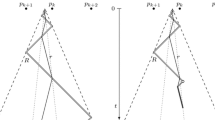
Overview
Part of the book series: Lecture Notes in Computer Science (LNCS, volume 2903)
Part of the book sub series: Lecture Notes in Artificial Intelligence (LNAI)
Included in the following conference series:
Conference proceedings info: AI 2003.
Access this book
Tax calculation will be finalised at checkout
Other ways to access
About this book
Similar content being viewed by others
Keywords
Table of contents (91 papers)
-
Front Matter
Other volumes
-
AI 2003: Advances in Artificial Intelligence
Editors and Affiliations
Bibliographic Information
Book Title: AI 2003: Advances in Artificial Intelligence
Book Subtitle: 16th Australian Conference on AI, Perth, Australia, December 3-5, 2003, Proceedings
Editors: Tamás (Tom) Domonkos Gedeon, Lance Chun Che Fung
Series Title: Lecture Notes in Computer Science
DOI: https://doi.org/10.1007/b94701
Publisher: Springer Berlin, Heidelberg
-
eBook Packages: Springer Book Archive
Copyright Information: Springer-Verlag Berlin Heidelberg 2003
Softcover ISBN: 978-3-540-20646-0Published: 24 November 2003
eBook ISBN: 978-3-540-24581-0Published: 01 December 2003
Series ISSN: 0302-9743
Series E-ISSN: 1611-3349
Edition Number: 1
Number of Pages: XXXII, 1078
Topics: Artificial Intelligence, Computation by Abstract Devices, Mathematical Logic and Formal Languages, Database Management, Information Storage and Retrieval, Information Systems Applications (incl. Internet)



